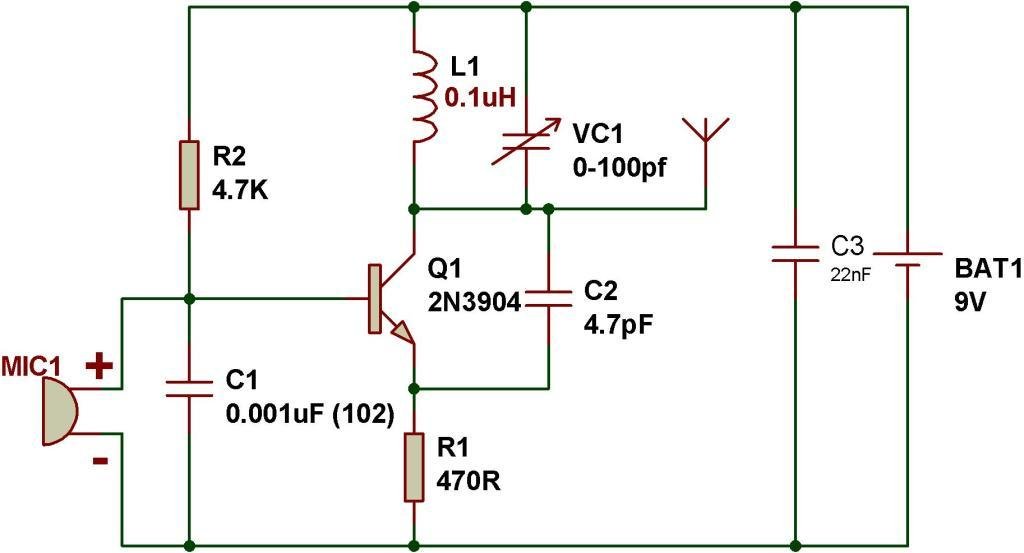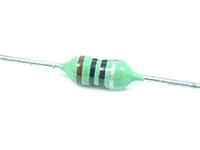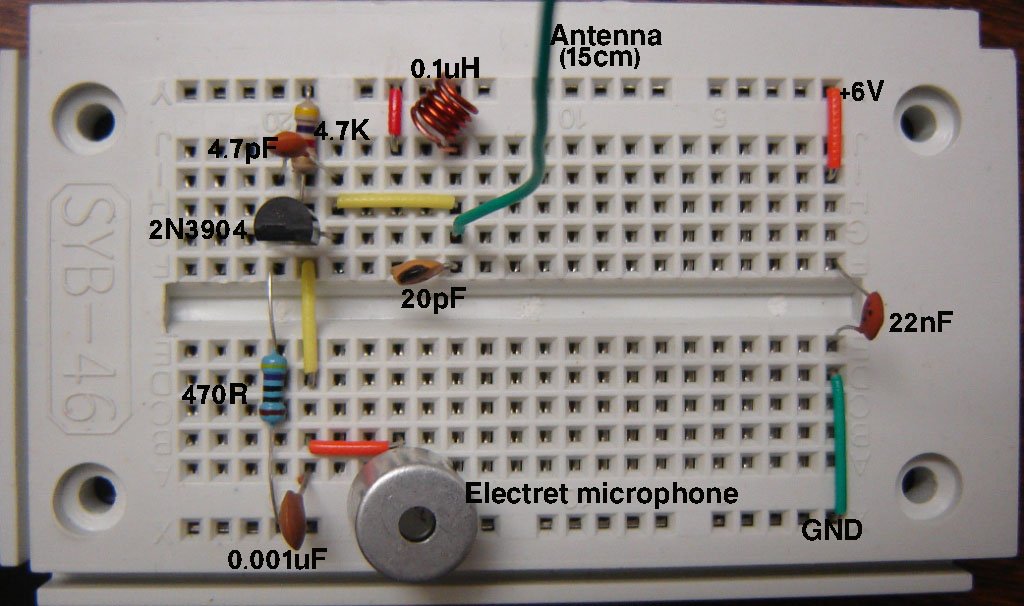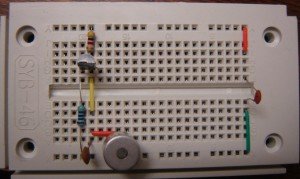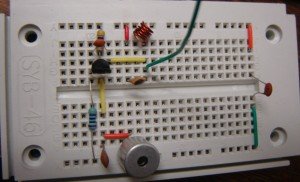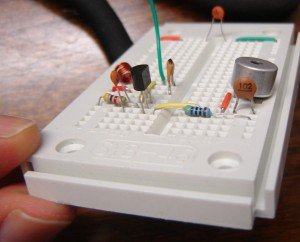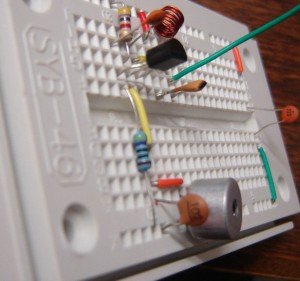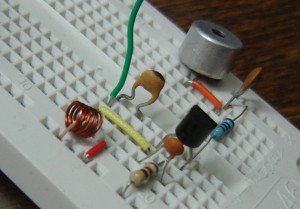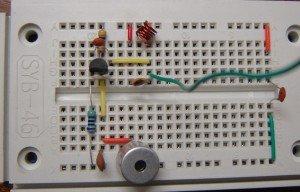Whether you want to protect your room from a nosy sibling or you're looking for a cheap, do-it-yourself home security system, you can easily make a loud and effective door alarm from home. Here's how to do it!Part 1 of 2: Gathering Materials
- Go to your local hardware store and buy all the materials you'll need. Your best bet is to go to a large, name brand hardware store. Everything should be relatively cheap, probably no more than $30, depending on what you already have. You should also check your garage before you go shopping to see if you have any of the materials. Here's what you'll need:
- Insulated wire (buy as small a spool as possible)
- 1.5 volt battery
- 1.5 volt mini-buzzer (if you can't find this at a hardware store they'll have one at an electronics store)
- String (3-5 feet long)
- Clothes pin
- Plywood (at least 4 inches by 12 inches)
- Glue
- Electrical tape
- Wire stripper or scissors
- Removable hanging strips (optional)
-
2Attach the plywood to the wall next to your door. Use removable hanging strips or tape to secure the wood on the wall. This will be the base of your door alarm.
- Attach it close to the top of the door, about a foot from the door frame.
- Alternatively, you can place the alarm flat on your desk or bookshelf so you don't have to hang everything.
- If you want the alarm to be harder to deactivate, you can place it further away from the door. You can also hide the alarm or place it high on the wall where somebody can't reach it to turn it off. Where you place the alarm is up to you.
-
3Cut three strands of insulated wire. Each strand should be about a foot long. If you don't have wire cutters, use scissors.
- Try bending the wire where you're trying to cut. If scissors don't work, use a knife.
-
4Strip the ends of each wire. That means you should cut off about two inches of insulation on the ends of each wire.
- Use a scissors or wire strippers to peel off the insulation. Cut until you hit the wire on the inside, and then pull off the insulation.
- If the insulation is difficult, use pliers or your teeth to pull of the insulation.
Part 2 of 2: Building the Alarm
-
1Tape the battery and buzzer onto your wooden board. Use electrical tape to attach them to the wood. Place them as shown in the picture.
-
2Wrap the stripped wire around the ends of the clothes pin. Use one end from each of your wires. Twist the stripped wire around until it's tight.
- Make sure the wires touch when the pin is closed.
-
3Connect another one of the stripped ends of wire to the battery. Make sure the wire is directly touching the end of the battery. Use electrical tape to keep the wire in place.
-
4Connect the other wire from the clothes pin to the buzzer. Use electrical tape again and make sure the wire is connected directly to input on the buzzer. There should be a small opening to insert wiring.
-
5Connect the last wire from the battery to the buzzer. Use the same method as before, making sure the copper wire is touching the metal on the battery and the metal inside the buzzer. Secure all the ends with electrical tape.
-
6Test the switch by opening and closing the clothes pin. When the clothes pin is closed, the buzzer should turn on. If not, check the wiring again.
- If the buzzer doesn't turn on, one of the connections of wiring is loose. That means the metal on the wire and the metal on the battery or buzzer are not touching or not touching firmly enough. Redo the connections and make sure they are firmly together.
- To improve the connection on the battery, try this method.
- To improve the connection on the buzzer, strip the wire more. The more copper wire exposed the more connection there is. If the buzzer has a screw to fasten the wiring, put the wire in the insert and fasten the screw to clamp the wiring in place. If there is no screw, use plenty of electrical tape.
- Make sure the ends of stripped wire on the clothes pin are firmly touching. If they aren't or are just barely touching, wrap more wire around until the connection is strong.
- Alternatively, you could be using a faulty battery or buzzer. Try a different battery. If that doesn't work, and you're certain your connections are strong, bring the buzzer back and get a new one. They should reimburse you for the faulty buzzer.
-
7
-
8Glue the clothes pin to the wood. Keep the clothes pin close to the battery and buzzer.
- Tape down any excess wiring to the wood with electrical tape.
-
9Attach the string to the piece of cardboard between the clothes pin. Make sure the string is tied tightly to the center of the cardboard.
-
10Tape the other end of the string to your door. Adjust the length of string and placement of the alarm so that the string is taut between the alarm and the door. When the door opens, the string should pull the cardboard out, setting off the alarm.
We could really use your help!
Can you tell us about
Papier Mache?
Can you tell us about
iOS?
Can you tell us about
Skin Care?
Can you tell us about
Pots and Pans?
Tips
- Remember to check your garage or work shed for materials before you go shopping. There's a good chance you already have most of the materials you need!
- Scissors work well for stripping wire. Cut until you hit the internal wire. Then pull the insulation using the scissors.
Warnings
- Use sensible precautions when working with electricity.
- If your alarm is for home security, don't put any part of the electrical circuit in a place where a burglar could break it. Remember, a stealthy break-in requires only for the circuit to be broken.
- Be careful when cutting and stripping the wires. Cut away from you and keep you fingers and limbs away from the knife.
Things You'll Need
- Insulated wire (2 strands)
- 1.5 volt battery
- 1.5 volt mini buzzer
- Electrical tape
- String (3-5 feet)
- Spring-type wooden clothes pin
- Piece of plywood (4 in x 12 in or greater)
- Glue
- Wire stripper or scissors
- Removable hanging strips
































